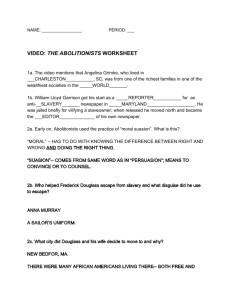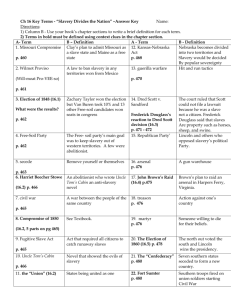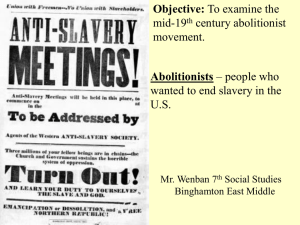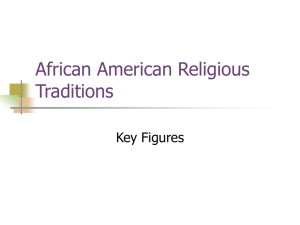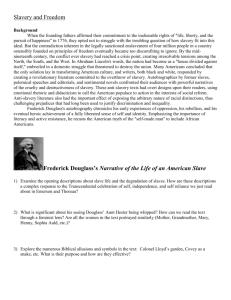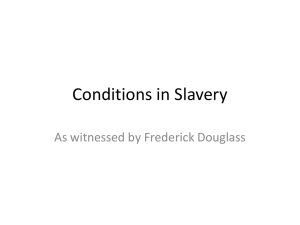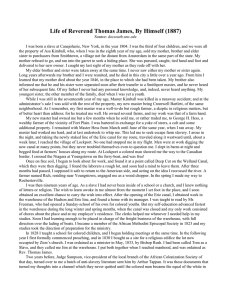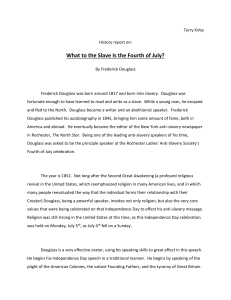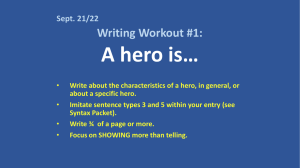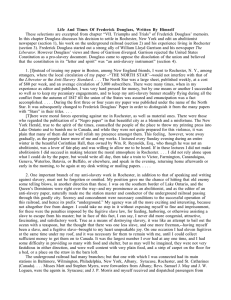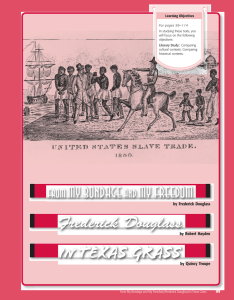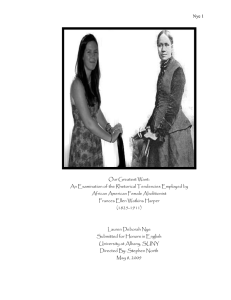Sep4,5,6,9 Slaveryintro
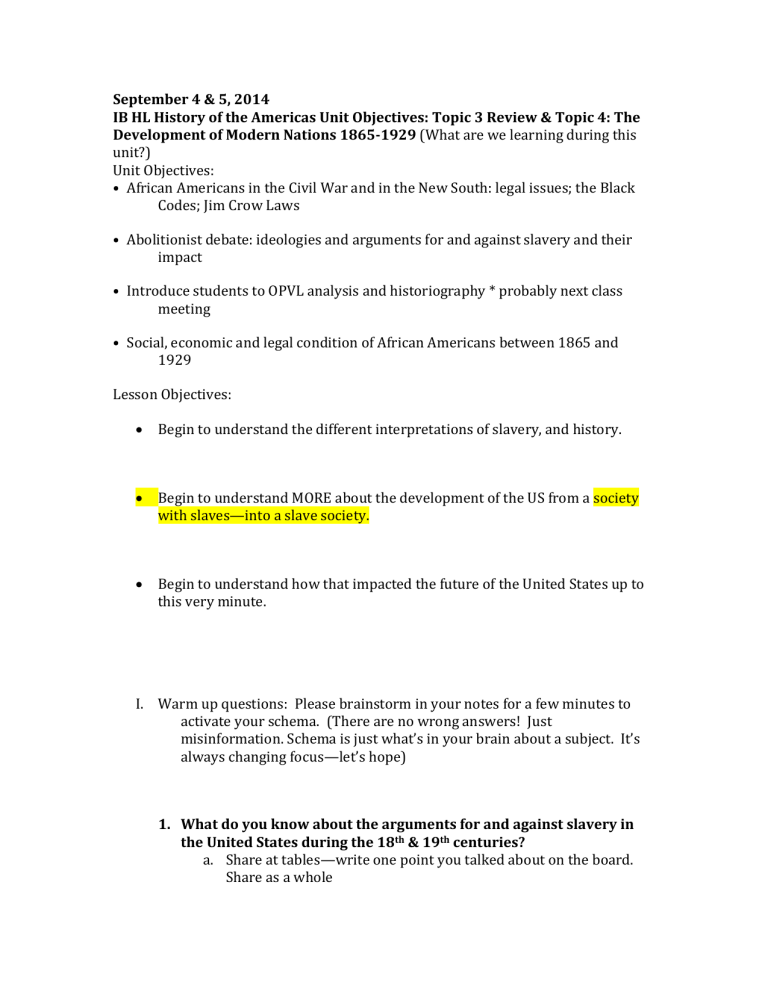
September 4 & 5, 2014
IB HL History of the Americas Unit Objectives: Topic 3 Review & Topic 4: The
Development of Modern Nations 1865-1929 (What are we learning during this unit?)
Unit Objectives:
• African Americans in the Civil War and in the New South: legal issues; the Black
Codes; Jim Crow Laws
• Abolitionist debate: ideologies and arguments for and against slavery and their impact
• Introduce students to OPVL analysis and historiography * probably next class meeting
• Social, economic and legal condition of African Americans between 1865 and
1929
Lesson Objectives:
Begin to understand the different interpretations of slavery, and history.
Begin to understand MORE about the development of the US from a society with slaves—into a slave society.
Begin to understand how that impacted the future of the United States up to this very minute.
I.
Warm up questions: Please brainstorm in your notes for a few minutes to activate your schema. (There are no wrong answers! Just misinformation. Schema is just what’s in your brain about a subject. It’s always changing focus—let’s hope)
1.
What do you know about the arguments for and against slavery in the United States during the 18 th & 19 th centuries? a.
Share at tables—write one point you talked about on the board.
Share as a whole
2.
How do we know today how people lived in the United States during the 19 th century? (1800s)
3.
Do we have the same data from all groups of people? American
Indians, immigrants, slaves, women factory workers?
II.
Introduce Slave Narratives—discuss meaning and process. Show clip.
Unchained Slave Narratives—time permitting http://www.youtube.com/watch?v=XWqVMNUawso http://www.loc.gov/teachers/classroommaterials/connections/narratives-slavery/
III.
Short Abolitionist—Anti-Slavery Lesson—please know the following
1.
Difference in Anti-slavery groups and Abolitionists groups a.
Know the political parties, religious groups and regions that espoused, for the most part, the arguments. I will show you. You need to ask questions and take notes. b.
Insert chart here—good place to start making a kind of chart to keep things organized . . .
2.
Know Immediatism & Moral Suasion (probably should take notes here.
This material will be assessed on a short little quiz) a.
Immediatism b.
Moral Suasion—from our reading who ascribed deeply to immediatism and to the use of moral suasion? Which clues do have to “guess” that?”
We will talk about history as just a guess . . .. Later.
Know:
3.
William Lloyd Garrison & The Liberator, January 1, 1831 (should know what a big year 1831 was in the US)
4.
Nat Turner? When? Outcome? Reaction or effects on the South? The
North? The nation?
5.
Charles Grandison Finney—“Burned-Over Districts” & The Great Second
Awakening—Evangelism
6.
Quakers
7.
New Yorkers Arthur & Lewis Tappan—money $$ behind much of the movement from New York—The Amistad Extra Credit viewing anybody?
8.
David Walker—Appeal to the Colored Citizens of the World (1829)
9.
Grimke Sisters
10.
John Brown
11.
Fire Eater—Edmund Ruffin & many others
12.
Theodore Dwight Weld
13.
American Colonization Society a.
Wendell Phillips b.
Hinton Helper c.
Frederick Douglass d.
Harriet Beecher Stowe
Short Break Here
IV: Frederick Douglass Books
1.
Video clip of Douglass speaking (actor)
2.
Homework—read Chapter 1 in FB & read “What is History?” Essay—t-4 essay.
3.
Purpose: vocabulary!
V: Historiography: Please read: “What Was the True Nature of Slavery?” Varying
Viewpoints, 369-370
1.
Purpose: How did the way historians view the nature of slavery change or differ over time? What was going on in the times that the historians were writing that may have affected their conclusions?
2.
Make a chart—Historians, thesis, years—etc.
